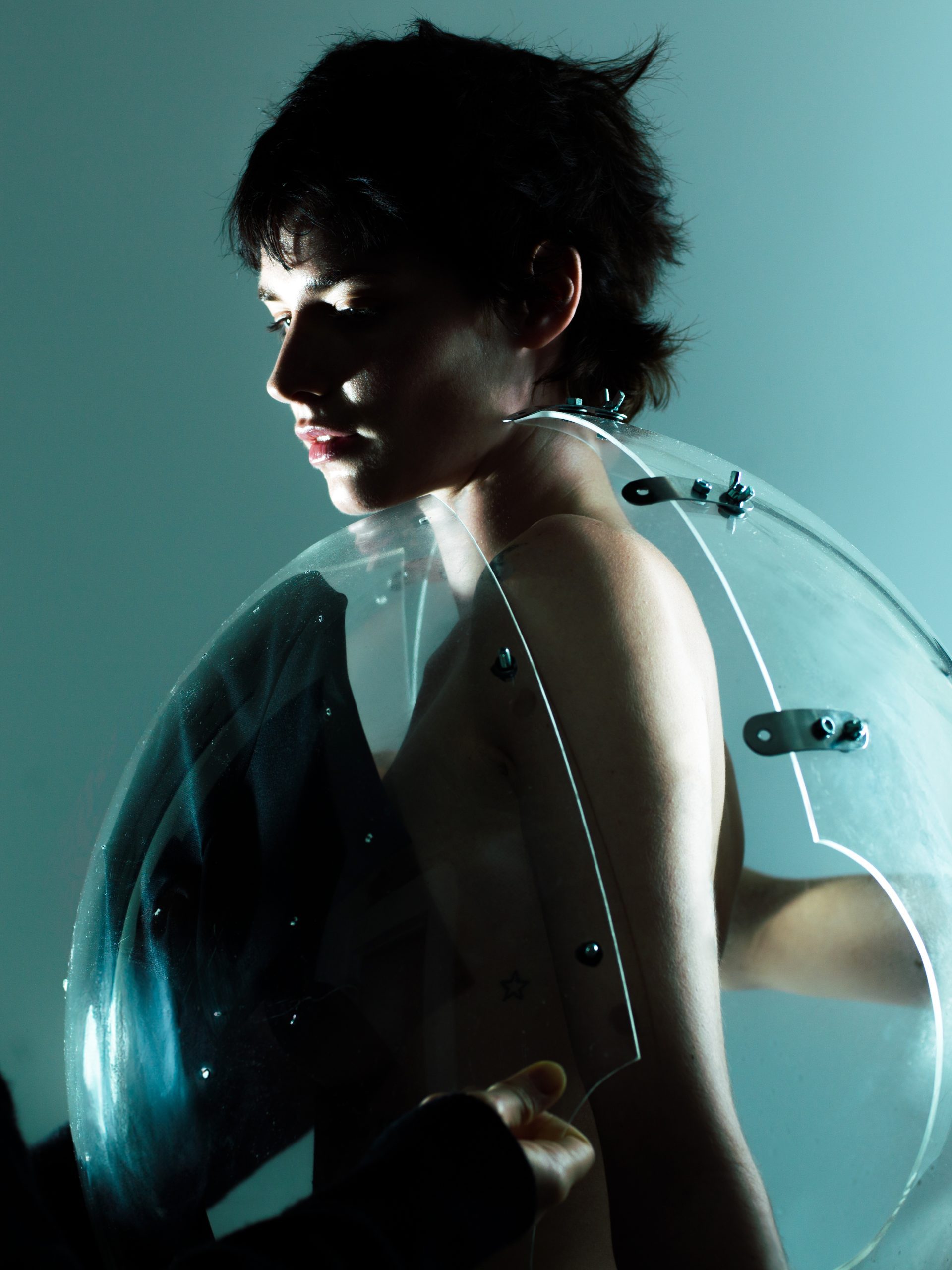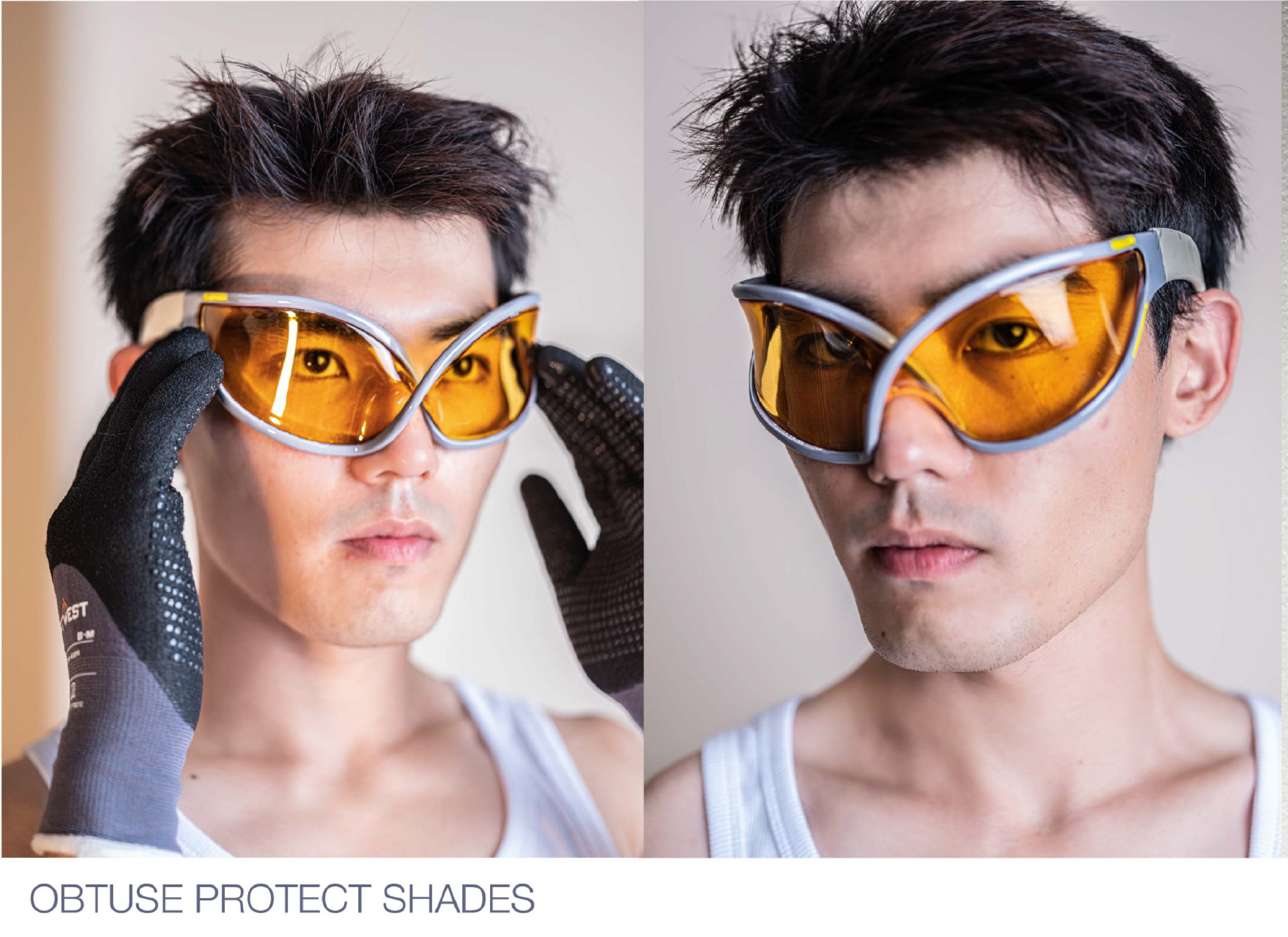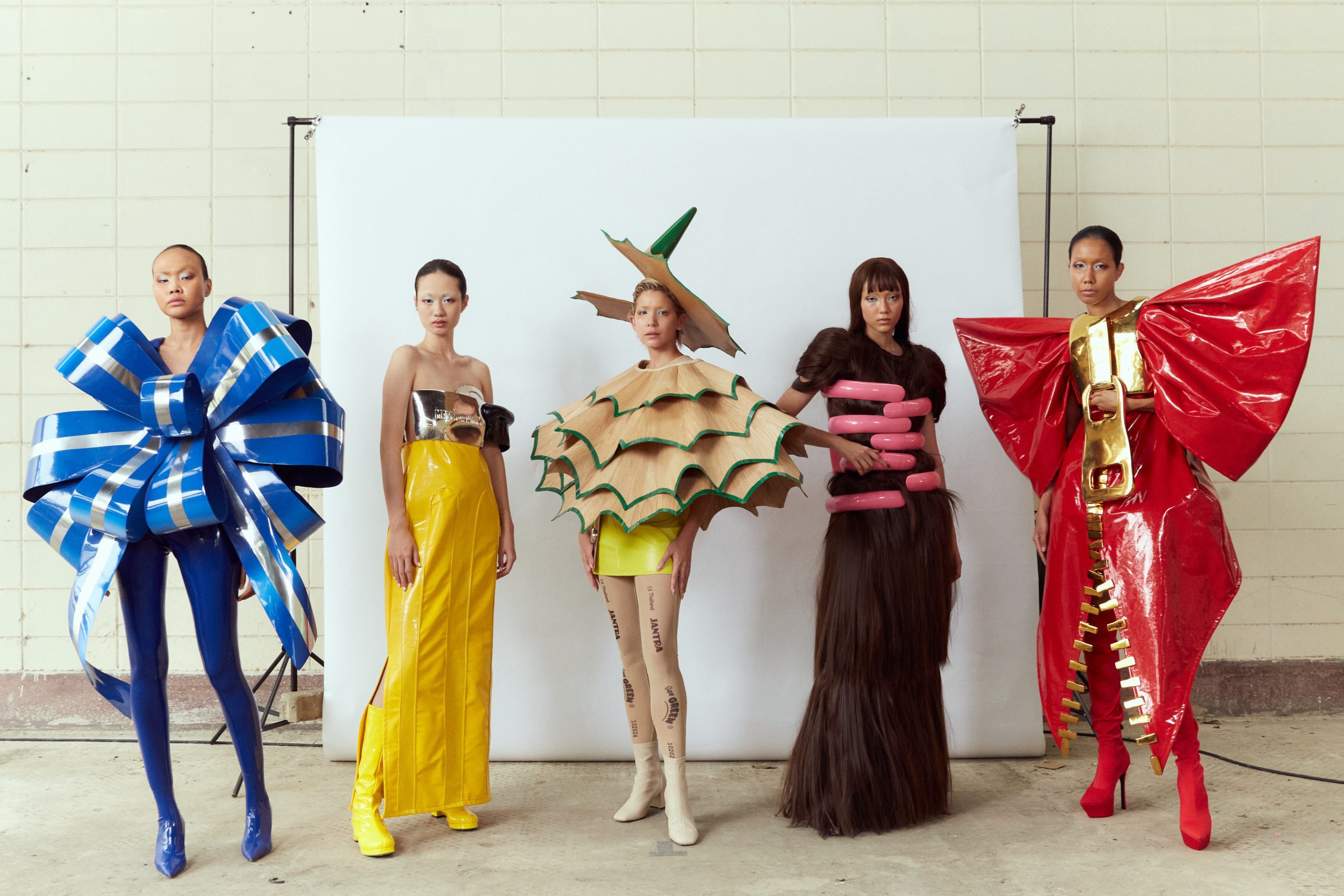Who needs a gallery space? Aimmee Dawson asked this in The Art Newspaper back in 2021, when the world was hooded in COVID uncertainty, and physical exhibiting was a distant memory. With museums, galleries, and press rooms bolted and frozen, their hubs of activity a nostalgic relic of the past, it fell to creators to replan the way in which they would showcase to the world. This same issue fell at the feet of fashion designers, whose textile escapades could no longer be interacted with physically, felt between finger and thumb, or tried on in studios and fitting rooms. It was social media that slipped neatly into the space that had been exhumed, and Instagram- with its clickable, likeable, photo sharing focus – that became the exhibition room of choice.
With mixed success in mimicking real showcase space, Instagram became a portal that offered cheap platforming to creatives, and curative algorithm-induced selections to potential buyers. A slither of the cost of a city-based showroom, cutting out the middle-man manager, and reaching unparalleled international audiences, day in, day out, 24hrs a day, the traditional “showroom” was quite quickly nudged out the picture. Whilst tangible viewings do still come with their perks, it became difficult to challenge the alternative storefront set up that could be designed through graphics, and uploaded onto instagram in a way that was adaptable, impermanent and cheap. In particular, the rewards of a virtual Instagram showspace, when compared with the costs of physical showspace, became particularly attractive to emerging designers, who had to invest very little into the platform to lay their reach wide.
So, how is Instagram being used as the online exhibition room, and which brands are doing this best?
GLITCH’S Top Talent Crushing The Virtual Showroom Game
Matty Bovan
Matty Bovan’s patchwork Instagram feed goes hand in hand with his eclectic style of designing. Featuring snippets of artwork, makeup looks, behind the scenes footage, and interview clips, the collaged content steps right into the middle of the Matty Bovan universe. By interacting with his followers through images of fabrics and prints, Bovan is able to bring Instagram followers not only into the exhibition room for his final pieces, but into his workshop, and into his creative process. His feed is visceral and emanates an exaggerated visual energy that is specific to his personality as a designer.
Never Fully Dressed
Never Fully Dressed has mastered the art of the unscripted video. Lucy Aylen, who began selling her clothes at London markets, has had booming success with her natural and hands-on approach to selling the fashion she believes in. Their feed consists of video after video of Aylen styling her own creations on women of all different appearances, and showing Instagram scrollers how they can achieve a similar look. Her personality is strong and personable throughout the entire feed, and this marketing strategy aims to replicate the experience of being in store with Aylen herself.
Paloma Wool
Paloma Wool have got it right when it comes to the raw photography aesthetic, and the illusion of the unedited. Instead of focusing on editorial level imagery, the Paloma Wool feed features a variety of casual contents. From packaged products, to product stills, to styling ideas, to modeled looks that appear very “off-the-cuff”, the varied content gives the brand a very raw and authentic feel. Paloma Wool doesn’t use their instagram to promote a marketing campaign, nor to flex the skills of their social team. The feed simply curates a very accurate and easy to understand blueprint of the collection, so that viewers can get to know the shapes, textures and colours, as if the garments were in front of them.
But, how easy is it to establish yourself on Instagram, and is it always a foolproof plan?
In applauding these brands for their spirited use of Instagram, it also become painfully obvious that such content and feed curation is the output of a synchronized team and a social director. There is a stark difference in the way established brands can use Instagram, and reap valuable community connections, in contrast to smaller creatives. Taking the time to speak with some more emerging designers, and fashion school graduates, it became more clear that Instagram was a two fold platform; it is a method of sustaining and growing a consumer base for some brands, but is also a portal that serves up hot opportunities for more undiscovered names.
Ása Briet, a womenswear designer and 2023 Central Saint Martins graduate lended her voice to explain this intricate power of Instagram that is specific to emerging creative. “Instagram is so easy and useful to use, and everyone is one there! So it is easy to be ‘seen’ or ‘found’. I have had numerous opportunities through instagram and met a lot of people. I guess that is one of the reason why I use instagram as a platform for my work”. When I asked her about the risks of Instagram, and if she ever feared that users could free ride off of her ideas, Briet pinpointed the uniqueness of her work as something that was “un-copyable”. “The thing is my work is about the process, it is about the handling of textiles with specific techniques that I have created myself . My work is also deeply personal to the extent that Ii know that if anyone is going to copy my work, their ways of making it will never be the same. For me, craft is about sharing knowledge and influencing others to begin making with their hands. So if someone is copying some of that, and stopping scrolling on their phones for a minute to work with their hands, then to me, that’s great! “
However, for all its extensive capabilities, Instagram, as we have come to learn is the case for many social-sharing platforms, is not without defects and foibles. And, whilst its wealth of uses is advantageous for emerging creatives looking to distribute their work outside of their immediate locality, it also makes them vulnerable, and opens them up to a variety of risks. Their work and projects, once disseminated into the Instagram sphere, are open to vengeful imitation and unfair free usage of the imagery. “Create ideas are a young designer’s currency, and through Instagram, they are given away for free”. Instagram offers brands a boundless showroom space, and one that’s footfall is unmatched. Yet, this benefit is double edged, and means there is no regulation to who exactly views their work, less what they do with pieces they see. Yves Béhar, founder and creative CEO of Fuseproject, a design and branding firm, explained in an interview with design week how this risk of “copying” is even more amplified for designers who work with digital assets. He explained that social media has a strong presence in how he shares and popularizes his team’s work and ongoing projects, but begged to the wider masses that people “build something new instead of profiting off inventions they haven’t even created in the first place”.
Laura Bachmmann called instagram a “poisoned chalice” for fashion students, back in an article for I-D in 2018. And it seems her theatrical use of wording is increasingly apt. Not only is Instagram unreliable in bringing authentic and trustworthy voyeurs to your creation, but designers can receive instantaneous feedback, through likes and comments, from personalities across the globe, who may, or may not be make informed analysis of the work before them. Bachmann spoke worryingly of the pressure upon fashion students to not only create “good” work, but create work that looks good on camera, with Instagram becoming a new “barometer of public opinion”. If this platform has become the new fashion exhibition room, does fashion now also have to appease not only the tastes of fashion critics but the tastes of Instagram, and as such lean into the trends of the platform? This seems too much of a complex added pressure to burden on the shoulders of young creatives, and an inauthentic one to say the least. Conversely, to play devil’s advocate, aren’t designers designing for a public audience anyway? The question at stake seems to be, to what extent is Instagram an accurate depiction of public taste, and whether or not it is screwing with the feedback loops that designer’s receive. Whilst Instagram might be the cheapest exhibition room on the market, it would be naive to think it isn’t impact the way we create, critique, and consume.
Written by Hebe Street from GLITCH Magazine





